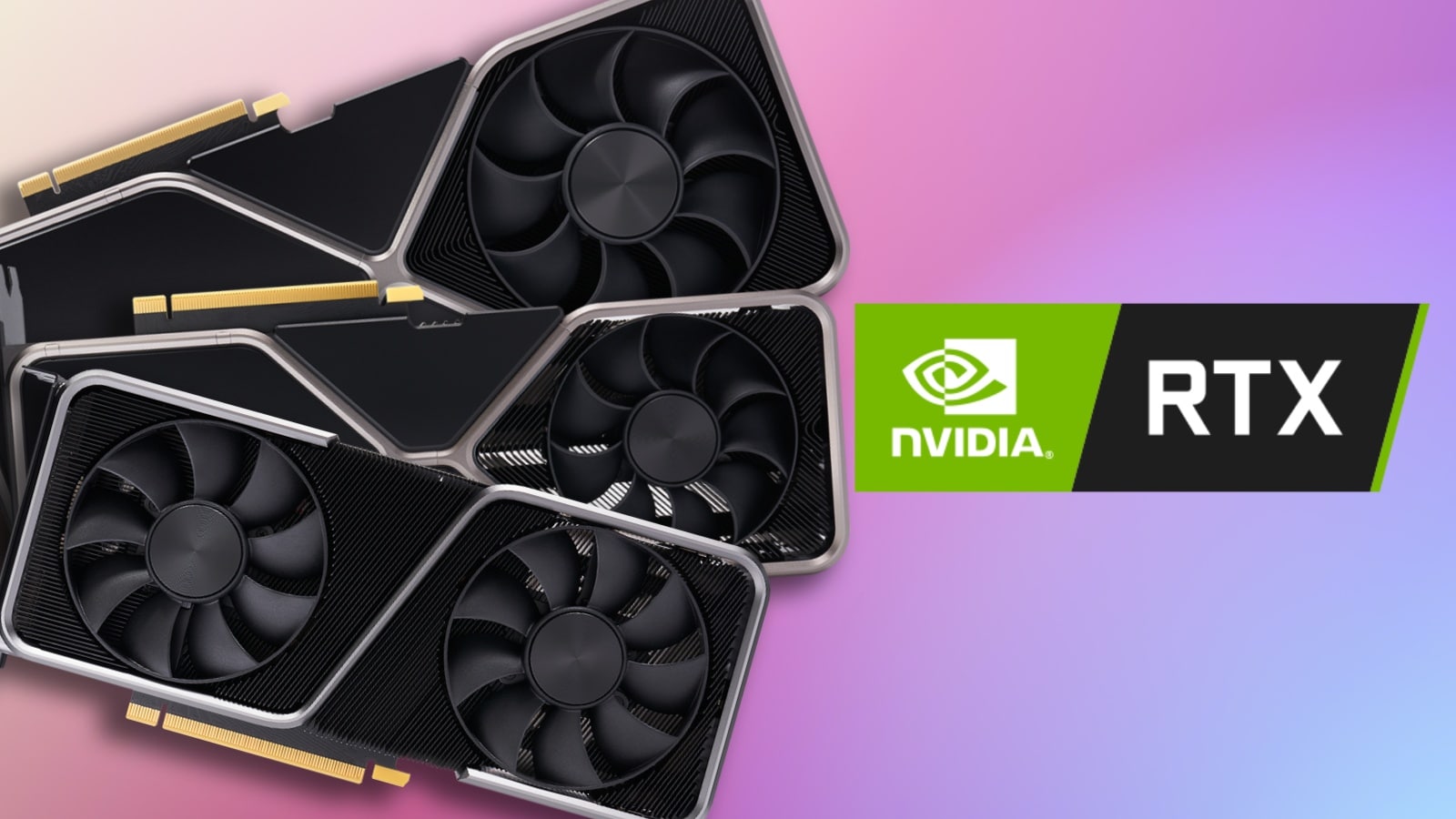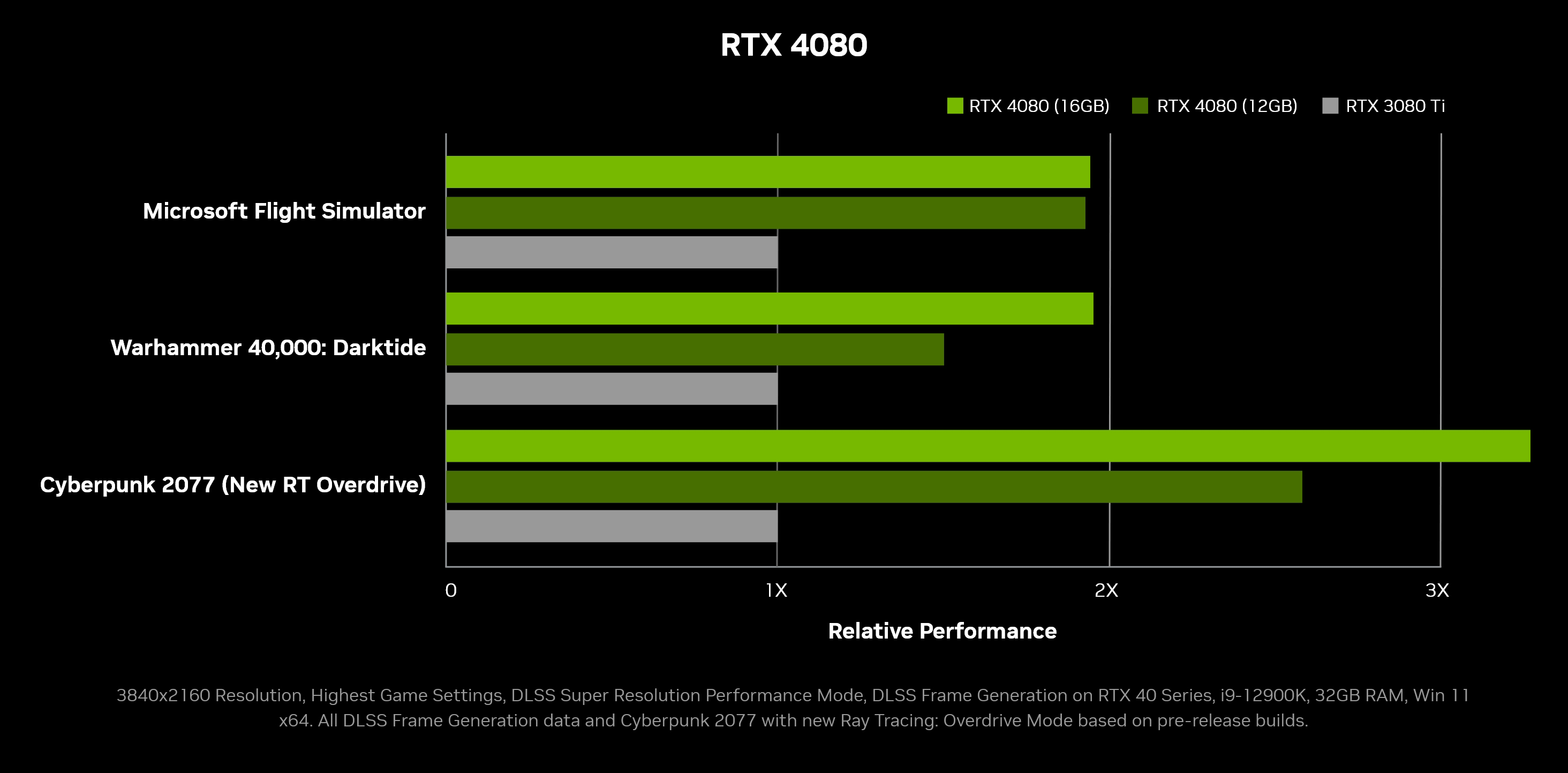The NVIDIA RTX 40 series is a line of graphics cards that were released in 2022 and is based on the company's Ampere architecture. These graphics cards are designed for gamers, content creators, and professionals who need high-performance graphics processing.
Some of the key features of the RTX 40 series include:
1. Ray tracing: This technology allows for real-time, physically-accurate lighting and shadows in games and other 3D applications.
2. AI-accelerated features: The RTX 40 series features Tensor Cores, which can be used for tasks such as denoising, upscaling, and super-resolution.
3. Improved performance: The RTX 40 series offers improved performance over its predecessor, the RTX 30 series, thanks to its larger die size and higher core count.
4. Support for 8K resolution: The RTX 40 series supports high-resolution displays, making it ideal for those who want to game or work on 8K displays.
The RTX 40 series includes several different models, ranging from the entry-level RTX 4060 to the high-end RTX 4080 Ti. These cards support a range of connectivity options, including HDMI, DisplayPort, and VirtualLink, and are compatible with both Windows and Linux.
In summary, the RTX 40 series is a line of high-performance graphics cards that offers cutting-edge features and improved performance compared to previous generations. Whether you're a gamer, content creator, or professional, these cards can provide the graphics processing power you need.
The NVIDIA RTX 40 series is the latest addition to the company's line of graphics cards, and it brings with it many new and improved features that are sure to impress. These graphics cards are built on the company's Ampere architecture, which allows for faster and more efficient graphics processing. This makes the RTX 40 series ideal for demanding applications such as gaming, content creation, and professional use.
One of the key features of the RTX 40 series is ray tracing, which allows for real-time, physically accurate lighting and shadows in games and other 3D applications. This technology is what sets the RTX 40 series apart from previous generations, and it offers an immersive gaming experience that was previously not possible. With ray tracing, games look more realistic and lifelike, which can make them even more enjoyable to play.
In addition to ray tracing, the RTX 40 series also features AI-accelerated features. This includes Tensor Cores, which can be used for tasks such as denoising, upscaling, and super-resolution. These AI-accelerated features allow for faster and more efficient graphics processing, which can be especially useful for content creators who need to process large amounts of data.
The RTX 40 series also offers improved performance over its predecessor, the RTX 30 series. This is due to its larger die size and higher core count, which allows for more efficient graphics processing. Additionally, the RTX 40 series supports 8K resolution, making it ideal for those who want to game or work on high-resolution displays.
RTX 40-series: specs
The NVIDIA RTX 40-series graphics cards come in several models, each with different specifications. Some of the key specs that you should consider when choosing an RTX 40-series graphics card include:
GPU Core: The GPU core is the heart of the graphics card, and it determines the performance level of the card. The RTX 40-series graphics cards use NVIDIA's Ampere architecture, which offers improved performance, efficiency, and features compared to previous generations.
CUDA Cores: CUDA cores are the processing units in the GPU that are used to perform various tasks, such as rendering images and performing calculations. The number of CUDA cores can have a significant impact on the performance of the graphics card.
VRAM: VRAM, or video memory, is the memory that is used by the graphics card to store images and other data. The amount of VRAM in the graphics card can have an impact on the performance and quality of the visuals.
Memory Bandwidth: Memory bandwidth is a measure of how quickly the graphics card can access the VRAM. A higher memory bandwidth can result in improved performance, especially in demanding tasks that require a lot of memory access.
TDP: TDP, or thermal design power, is a measure of the maximum power that the graphics card can consume. A higher TDP can result in higher performance, but it also means that the graphics card will generate more heat and require more cooling.
Display Connectors: The display connectors determine the types of displays that can be connected to the graphics card. The RTX 40-series graphics cards typically include a combination of HDMI and DisplayPort connectors, as well as support for virtual link (USB-C) for VR headset connections.
Size: The size of the graphics card can impact the size and design of the system, and it can also determine the types of cooling solutions that can be used. The RTX 40-series graphics cards come in different form factors, including standard and compact sizes.
It's important to note that the specifications for each model of RTX 40-series graphics card can vary, and you should consult the manufacturer's specifications to determine the exact specs for the model you are interested in.e manufacturer's specifications to determine the exact specs for the model you are interested in.
RTX 40-series: performance
The top-end models, such as the RTX 3080 and RTX 3090, offer some of the best performance in the market, with support for real-time ray tracing, AI-accelerated features, and high frame rates at high resolutions. They are ideal for demanding tasks like 4K gaming, content creation, and scientific simulations.
The mid-range models, such as the RTX 3070 and RTX 3060, offer good performance for their price and are suitable for gaming at 1440p or 1080p, as well as for content creation and other demanding tasks.
The lower-end models, such as the RTX 3050 Ti and RTX 3050, are budget-friendly options that are ideal for entry-level gaming and creative tasks, providing a good balance of performance and affordability.
It's important to note that performance will depend on many factors, including the specific model, the system configuration, and the demand of the task you are performing.
RTX 40-series: Pricing and release date
The NVIDIA RTX 40-series graphics cards were released in 2022, with pricing that varied depending on the model and availability.
The top-end models, such as the RTX 3080 and RTX 3090, were priced at around $699 and $1,499, respectively, at launch. These models are designed for enthusiasts and demanding users who are looking for the best performance and features.
The mid-range models, such as the RTX 3070 and RTX 3060, were priced at around $499 and $329, respectively, at launch. These models are aimed at gamers and content creators who want good performance at a more affordable price.
The lower-end models, such as the RTX 3050 Ti and RTX 3050, were priced at around $149 and $119, respectively, at launch. These models are designed for budget-conscious users who want a good balance of performance and affordability.
It's important to note that prices can change over time, and availability can be affected by factors such as supply chain disruptions, demand, and market conditions. If you want to purchase an RTX 40-series graphics card, it may be a good idea to check the latest prices and availability from multiple retailers.
RTX 40-series: DLSS 3
DLSS (Deep Learning Super Sampling) is a feature in NVIDIA's RTX 40-series graphics cards. It uses artificial intelligence and deep learning algorithms to improve game performance by rendering the game at a lower resolution and then upscaling it to the target resolution. This allows the graphics card to perform fewer calculations and increase performance, while still delivering high-quality visuals.
DLSS 3 is the latest version of DLSS, and it's designed to work with the RTX 40-series graphics cards. It offers improved image quality and performance compared to previous versions, thanks to advancements in deep learning algorithms and hardware support.
DLSS 3 can be used in games that support it, and it can provide a significant boost in performance, especially in demanding games with high frame rates and resolutions. It can also improve the quality of the visuals by using AI to upscale the images, reducing the jagged edges and other visual artifacts associated with lower-resolution rendering.
Overall, DLSS 3 is a powerful feature in the RTX 40-series graphics cards that can provide a significant performance boost while maintaining high image quality, making it a popular choice for gamers and content creators alike.
RTX 40-series: power draw
The power draw of an NVIDIA RTX 40-series graphics card can vary depending on several factors, including the specific model, the system configuration, and the demanding of the task you are performing.
In general, the top-end models, such as the RTX 3080 and RTX 3090, have a higher power draw due to their high performance and features. These models typically require a power supply with a high wattage rating and multiple 8-pin or 6-pin power connectors to provide enough power for the graphics card to perform at its best.
The mid-range models, such as the RTX 3070 and RTX 3060, also have a relatively high power draw, but not as much as the top-end models. These models typically require a power supply with a lower wattage rating and fewer power connectors.
The lower-end models, such as the RTX 3050 Ti and RTX 3050, have a lower power draw and are designed to be more power-efficient, making them ideal for entry-level systems or systems with limited power capacity.
It's important to note that the power draw of an RTX 40-series graphics card can also be influenced by factors such as overclocking, the use of additional components, and the demand of the task you are performing. If you are building a system with an RTX 40-series graphics card, it's a good idea to consult the manufacturer's specifications to determine the power requirements and to choose a power supply that can meet those requirements.






